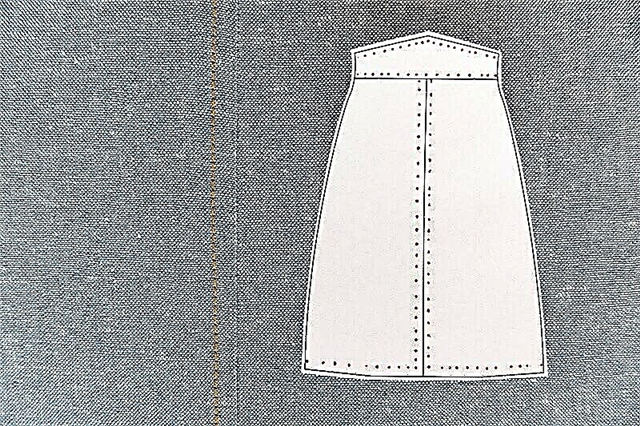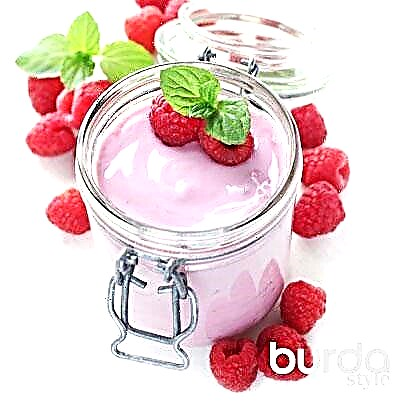Share
Pin
Tweet
Send
Share
Send
Have you ever heard of fabrics like cady or filkup? We will tell you about these unusual materials in more detail!
Clothing begins with fabric ... But not all fabrics can be found information - for fabrics with the name cady or filpepe - you can hardly find anything other than a general description and even in foreign forums, as if this is a big secret. We, using fabrics from our assortment and knowledge collected bit by bit, will tell you more about these materials.Kadi - "flowing water"
How to describe what cadi tissue is? Rather, it is a double crepe with a small margin of elasticity, much smaller than that of crepe knitwear. The surface of the matter is matte, with a minimal brilliance - as if the sun's rays are dissolved in it. In texture - it is closer to crepes and satin crepes, and at the cut you can see - the fabric has a "thickness", since the material is created by a two-layer or three-layer.
The threads in the canvas differ in texture - in the photo in front of you is a “disheveled” sample of fabric from our store, which clearly shows that the threads of the transverse direction are thinner, twisted, while others are more loose and “voluminous”.

The plasticity of this fabric is quite original - you seem to be holding in your hands a tangible smooth surface, heavy, sliding, and at the same time flexible and flowing.It is the soft folds of the cadi fabric, flowing down a waterfall - often give a luxurious look to finished products. Yes, we will not hide it - folds can form on the finished skirt or trousers, but the fabric quickly restores its original appearance, and there is no trace of the folds. And despite the thickness, it is a breathable and comfortable material, more “cool” than a jersey - you can sew clothes for the summer from cadi fabric, say, in central Russia.
Initially, cadi fabric was created exclusively from silk for couture and evening dresses, and was produced in the south of France. Very expensive, it was not available for everyday clothes, and gradually textile workers began to replace silk threads with more affordable raw materials. Today, you can find silk, cotton, viscose, rayon, wool and acetate as part of cadi, most often with the addition of elastane. And most rulers of ready-made clothes, even from such well-known labels as Marni, St. John, Armani, Stella McCartney or Gucci use cadie fabrics with a wide variety of compositions - both delicious evening dresses and quite everyday things are made from this fabric - jackets, trousers, skirts, overalls.
View cadi fabrics in our online store.

Caddy clothes from Versace, D&G, Elie Saab
Filkupe - “Down with Extra Thread”
The name of the filkupé fabrics comes from the French fil coupé, which literally means “cut thread”. And most often they characterize this material as a special type of textile with additionally added weft threads. Most of all filkupe is similar to jacquard or double organza, although the process of manufacturing this elegant fabric has its own characteristics.
Before releasing the first meters of fabric for sale, textile designers and technologists create and test hundreds of samples to find the best ratio between the warp, weaved threads, the desired texture and ease of use. Everything has its meaning in the sample - the thickness of the threads of the pattern, and the degree of tension, and weaving in the pattern itself. And only then sharp knives are repeatedly brought to the fabric, cutting off unnecessary threads and leaving the base intact, which requires a high degree of accuracy from textile machines. Even in the photo you can see, for the filcope, a very even and neat cut of the threads along the wrong side of the fabric is characteristic.
What does such technology give? First of all, it reduces the total weight of the fabric and, accordingly, products from it. Even the fringe made with filcope technology will be more airy and flying, and the fabric at the cut will be thinner and more elegant jacquard.

The voluminous texture, the ability to use a large number of colors and threads without increasing the weight of the material made filkupa a favorite of the catwalks - airy, delicate high-fashion dresses, evening and wedding dresses - these are the products in which filkupe fabric began to be used in the first place. The luxury and individuality of this fabric transforms simple silhouettes, and envelops in magic a simple cut. But designers and textile workers always go further in their experiments - quite everyday things are already appearing, sewn from filkupé fabric - from raincoats to blouses.
View fabric filkupe from our fabric store.

Clothing filkupe from Lanvin, Temperley London, D&G
The material was prepared by Svetlana Aleshina, art-fabric.ru online fabric store.
Share
Pin
Tweet
Send
Share
Send



